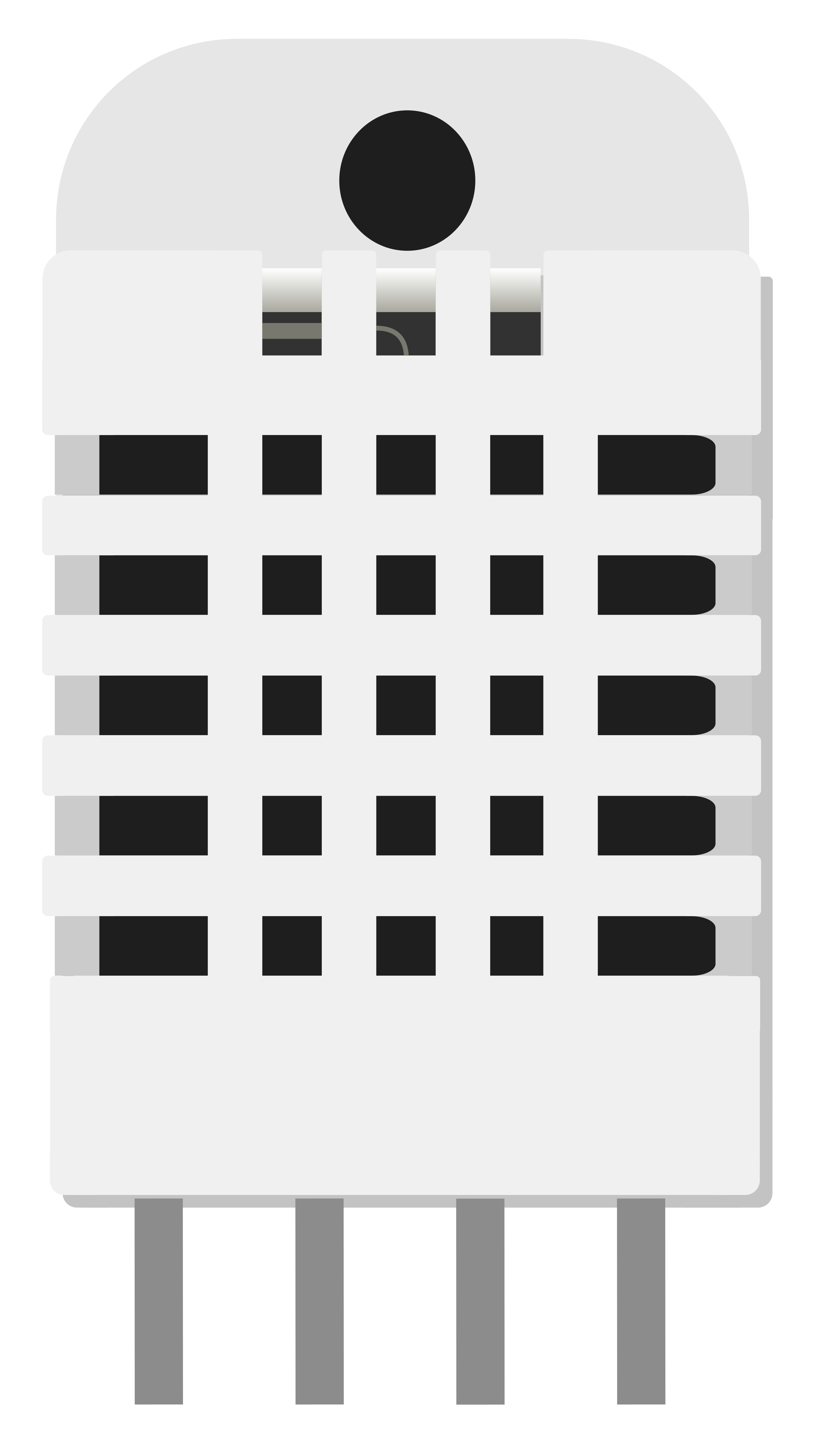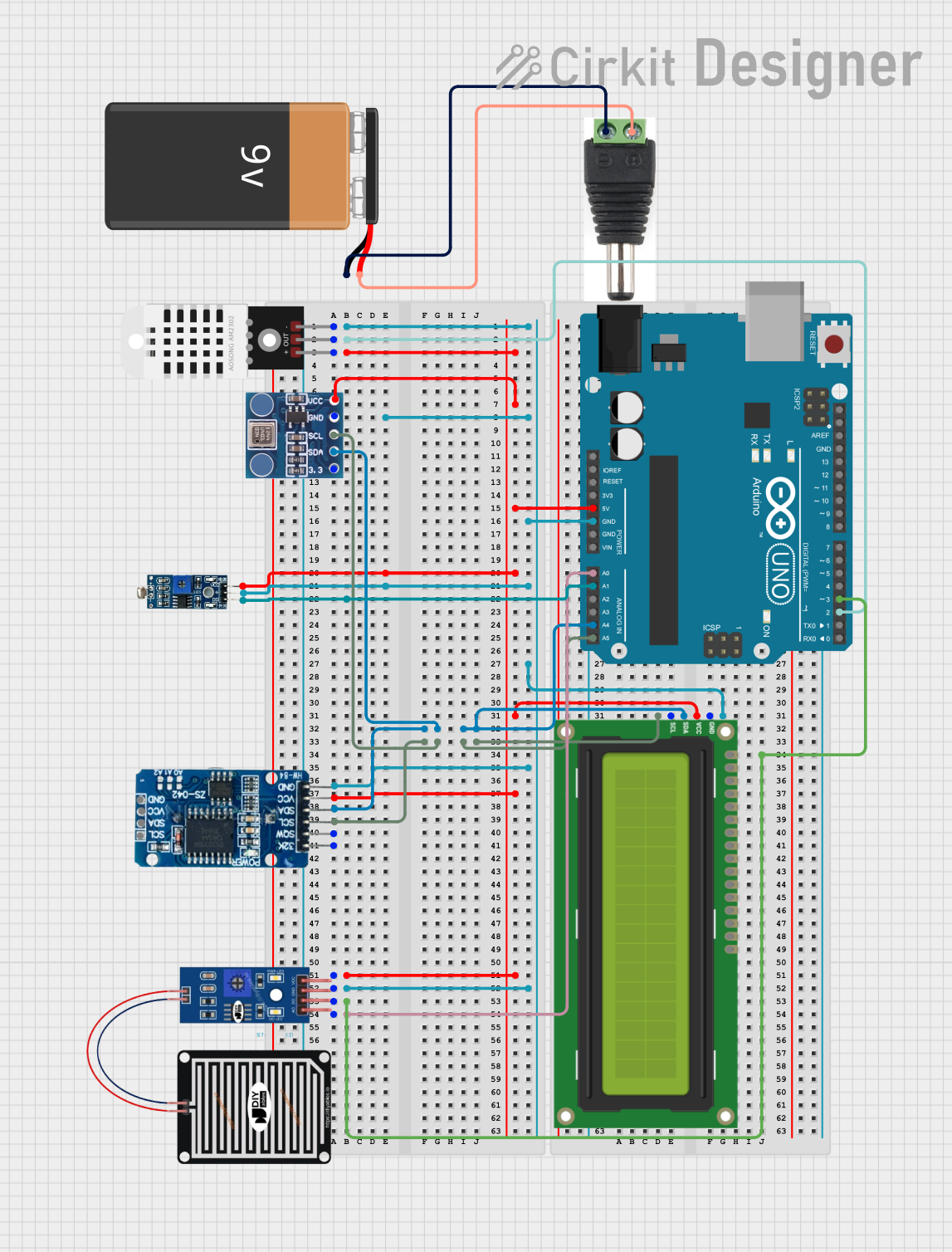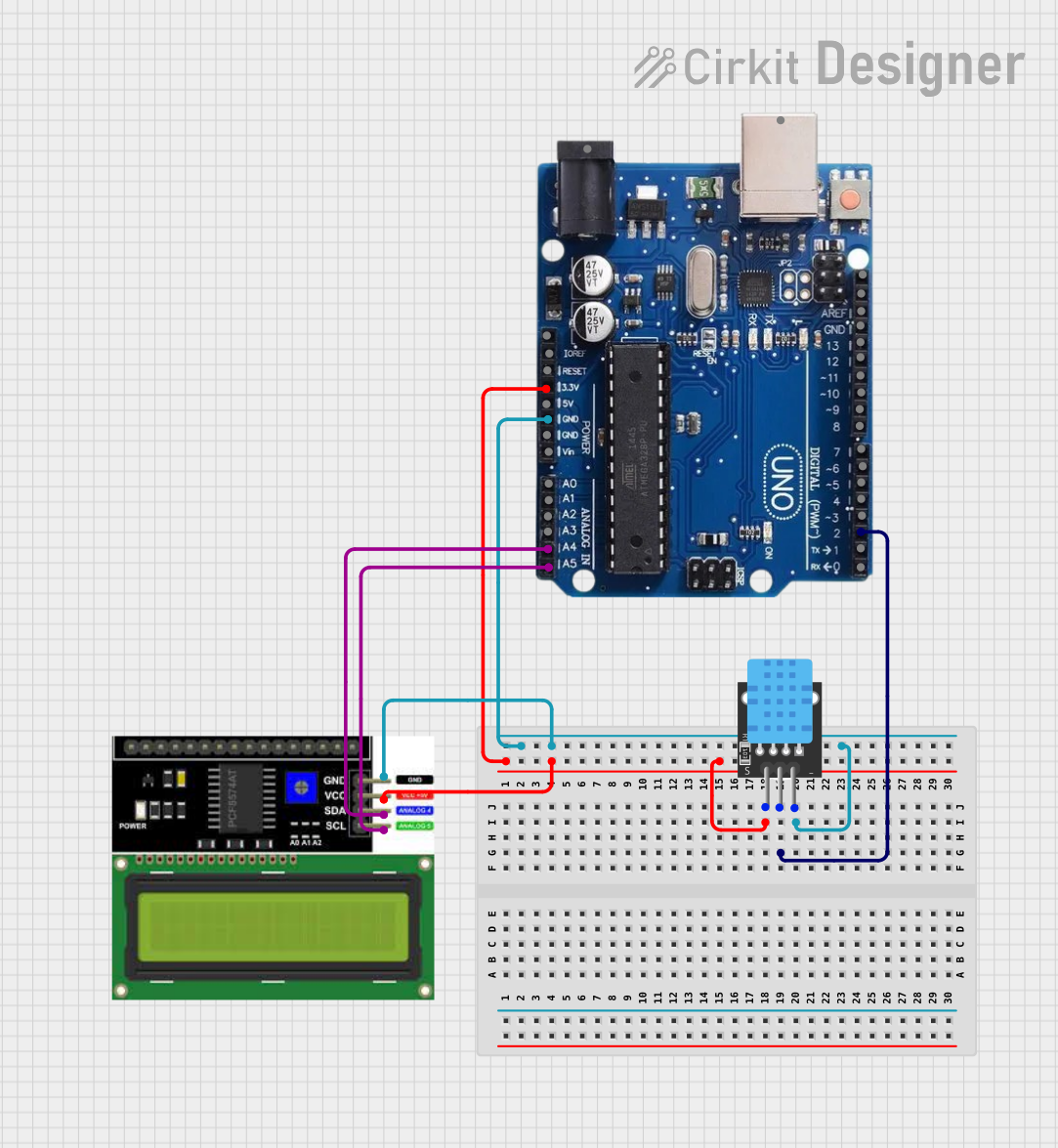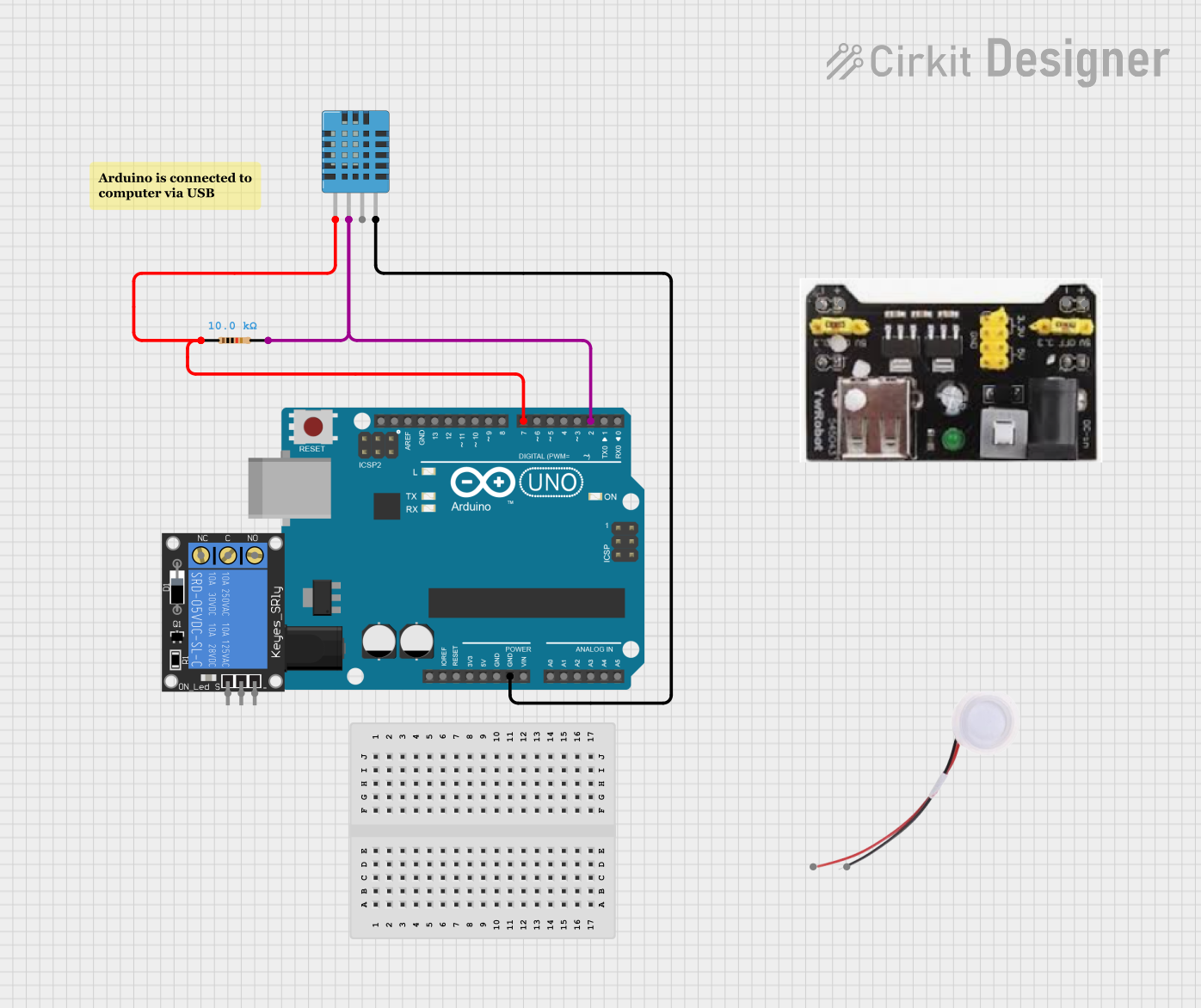
How to Use Humidity and Temperature Sensor (RHT03): Examples, Pinouts, and Specs

 Design with Humidity and Temperature Sensor (RHT03) in Cirkit Designer
Design with Humidity and Temperature Sensor (RHT03) in Cirkit DesignerIntroduction
The RHT03 sensor, also known as the DHT-22, is a reliable sensor that measures both humidity and temperature in the surrounding environment. It is a digital sensor that provides calibrated digital signals output, allowing for easy interfacing with various microcontrollers, such as the Arduino UNO. Common applications include HVAC systems, weather stations, home automation systems, and any application where environmental monitoring is necessary.
Explore Projects Built with Humidity and Temperature Sensor (RHT03)

 Open Project in Cirkit Designer
Open Project in Cirkit Designer
 Open Project in Cirkit Designer
Open Project in Cirkit Designer
 Open Project in Cirkit Designer
Open Project in Cirkit Designer
 Open Project in Cirkit Designer
Open Project in Cirkit DesignerExplore Projects Built with Humidity and Temperature Sensor (RHT03)

 Open Project in Cirkit Designer
Open Project in Cirkit Designer
 Open Project in Cirkit Designer
Open Project in Cirkit Designer
 Open Project in Cirkit Designer
Open Project in Cirkit Designer
 Open Project in Cirkit Designer
Open Project in Cirkit DesignerTechnical Specifications
Key Technical Details
- Humidity Measuring Range: 0-100% RH
- Humidity Accuracy: ±2% RH
- Temperature Measuring Range: -40 to 80°C
- Temperature Accuracy: ±0.5°C
- Operating Voltage: 3.3 to 6V DC
- Max Current: 2.5mA during conversion (while requesting data)
- Sampling Rate: ≤ 1Hz (once every second)
- Interface Type: Single-bus digital signal
Pin Configuration and Descriptions
| Pin Number | Name | Description |
|---|---|---|
| 1 | VDD | Power supply (3.3 to 6V DC) |
| 2 | DATA | Digital data output |
| 3 | NC | Not connected |
| 4 | GND | Ground |
Usage Instructions
Interfacing with Arduino
Connecting the Sensor:
- Connect the VDD pin to the 5V output on the Arduino.
- Connect the DATA pin to a digital I/O pin on the Arduino (e.g., pin 2).
- Connect the GND pin to the ground on the Arduino.
- A 5.1kΩ pull-up resistor is recommended between the VDD and DATA lines.
Programming the Arduino:
- Use the DHT sensor library for Arduino, which can be installed via the Arduino Library Manager.
- Initialize the sensor and read the values in your sketch.
Example Arduino Sketch
#include "DHT.h"
#define DHTPIN 2 // Digital pin connected to the DHT sensor
#define DHTTYPE DHT22 // DHT 22 (RHT03)
DHT dht(DHTPIN, DHTTYPE);
void setup() {
Serial.begin(9600);
dht.begin();
}
void loop() {
// Wait a few seconds between measurements.
delay(2000);
// Reading temperature or humidity takes about 250 milliseconds!
float humidity = dht.readHumidity();
// Read temperature as Celsius (the default)
float temperature = dht.readTemperature();
// Check if any reads failed and exit early (to try again).
if (isnan(humidity) || isnan(temperature)) {
Serial.println("Failed to read from DHT sensor!");
return;
}
// Compute heat index in Celsius (isFahrenheit = false)
float heatIndex = dht.computeHeatIndex(temperature, humidity, false);
Serial.print("Humidity: ");
Serial.print(humidity);
Serial.print("% Temperature: ");
Serial.print(temperature);
Serial.print("°C Heat index: ");
Serial.print(heatIndex);
Serial.println("°C");
}
Important Considerations and Best Practices
- Avoid placing the sensor in direct sunlight or near heat sources to prevent inaccurate readings.
- Ensure the sensor is not exposed to condensation or immersed in water.
- The sensor should not be subjected to large amounts of dust or other contaminants.
- Allow the sensor to acclimate to the environment for accurate readings.
Troubleshooting and FAQs
Common Issues
- Inaccurate Readings: Ensure the sensor is not placed near heat sources or in direct sunlight. Check for proper pull-up resistor placement.
- No Data: Verify all connections and ensure the correct pin is defined in the sketch. Check the power supply voltage.
- Erratic Values: Ensure there is a stable power supply and the pull-up resistor is correctly installed.
FAQs
Q: How often can I get readings from the sensor? A: The RHT03 can provide data up to once per second (1Hz).
Q: Can I use the RHT03 sensor with a 3.3V system? A: Yes, the RHT03 can operate with a supply voltage from 3.3V to 6V.
Q: Is calibration required for the RHT03 sensor? A: The RHT03 comes pre-calibrated from the factory. However, for critical applications, you may want to perform additional calibration.
Q: What is the purpose of the pull-up resistor on the data line? A: The pull-up resistor is necessary for the one-wire communication protocol to function correctly.
For further assistance, consult the manufacturer's datasheet and technical support forums.